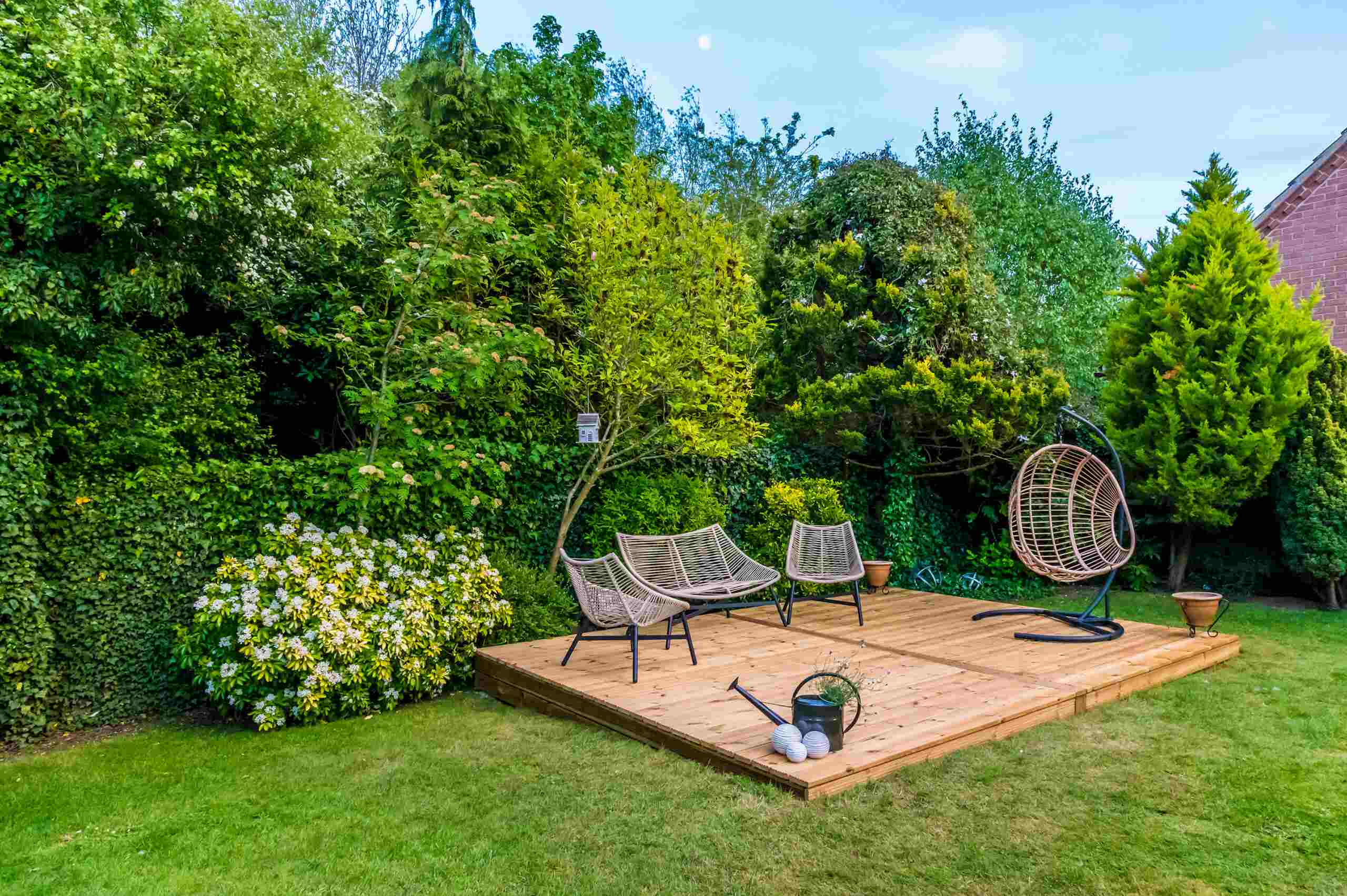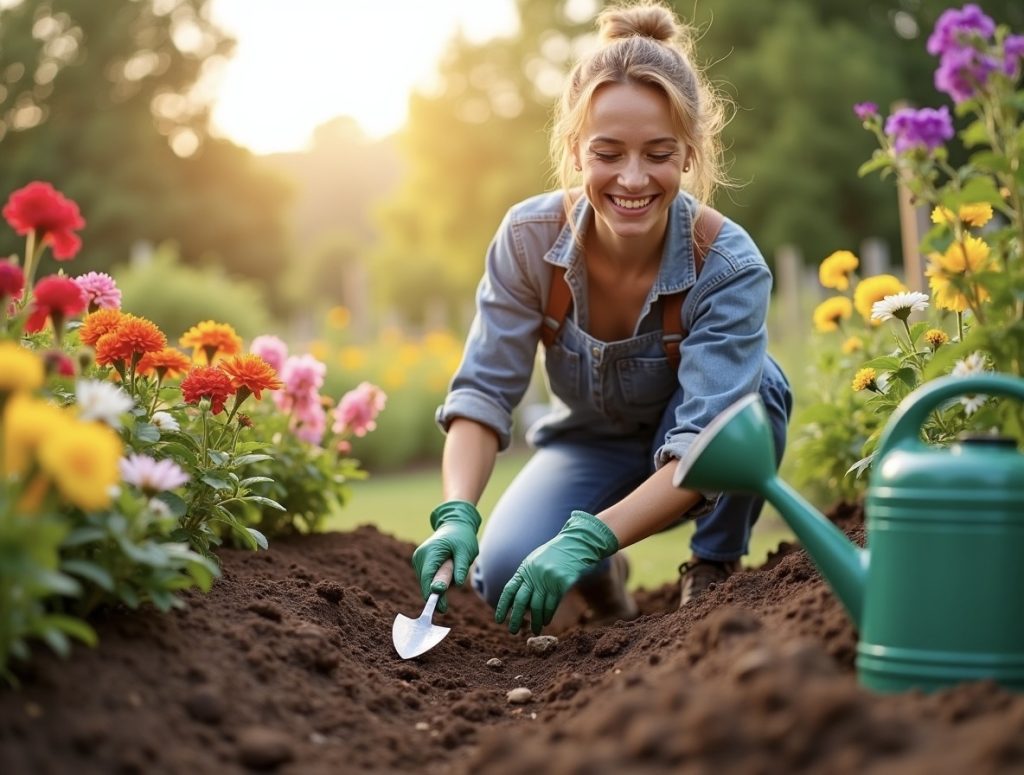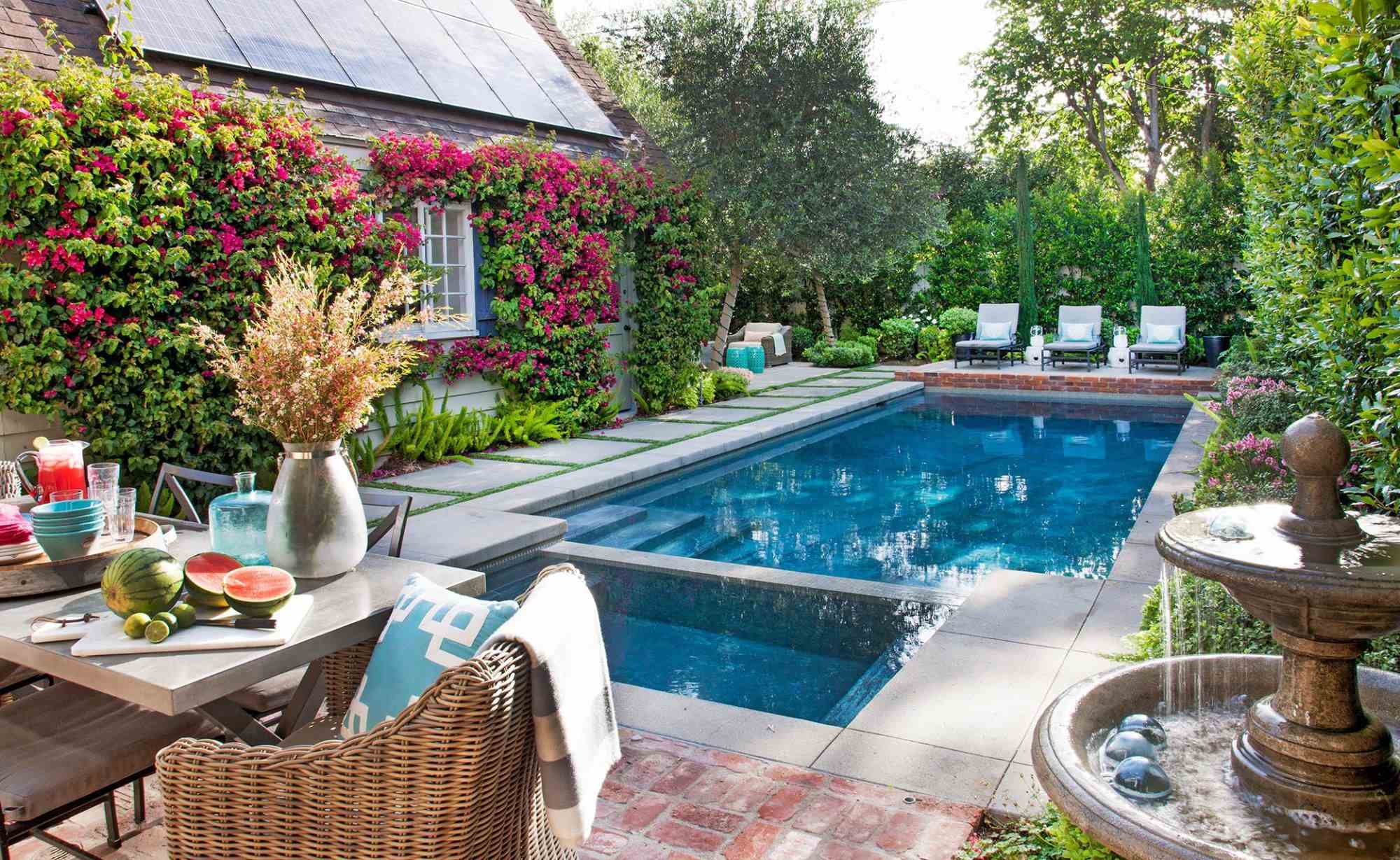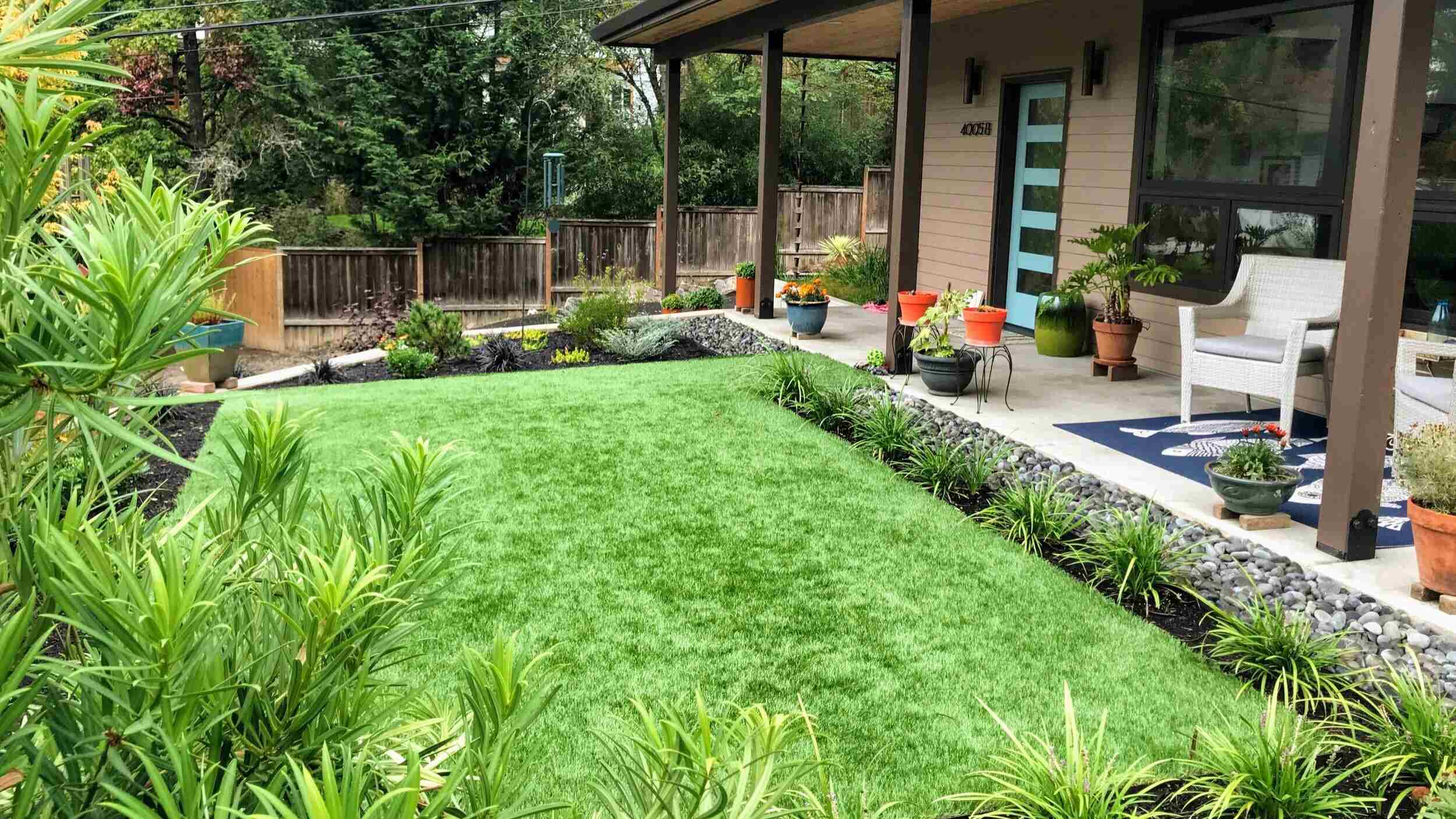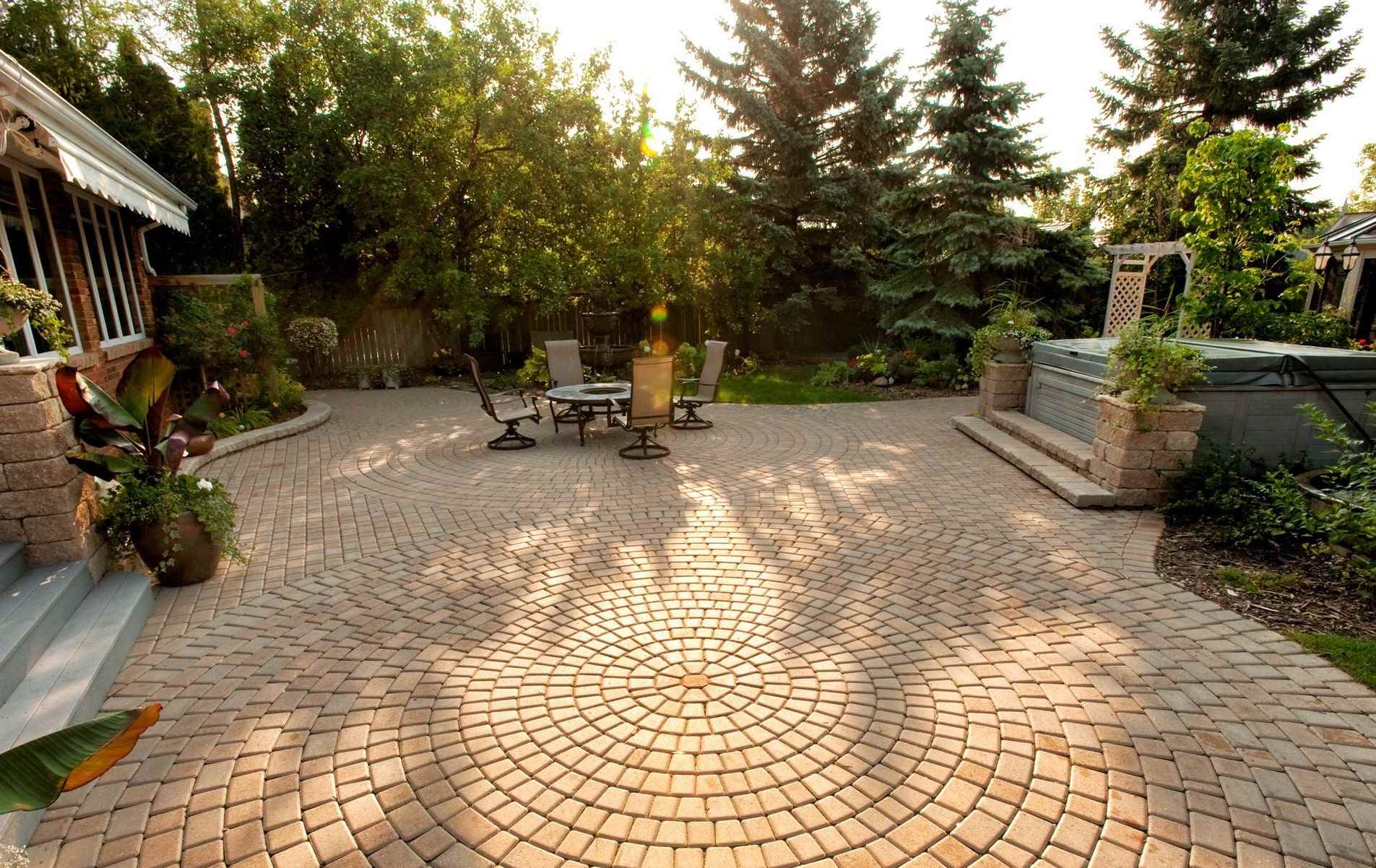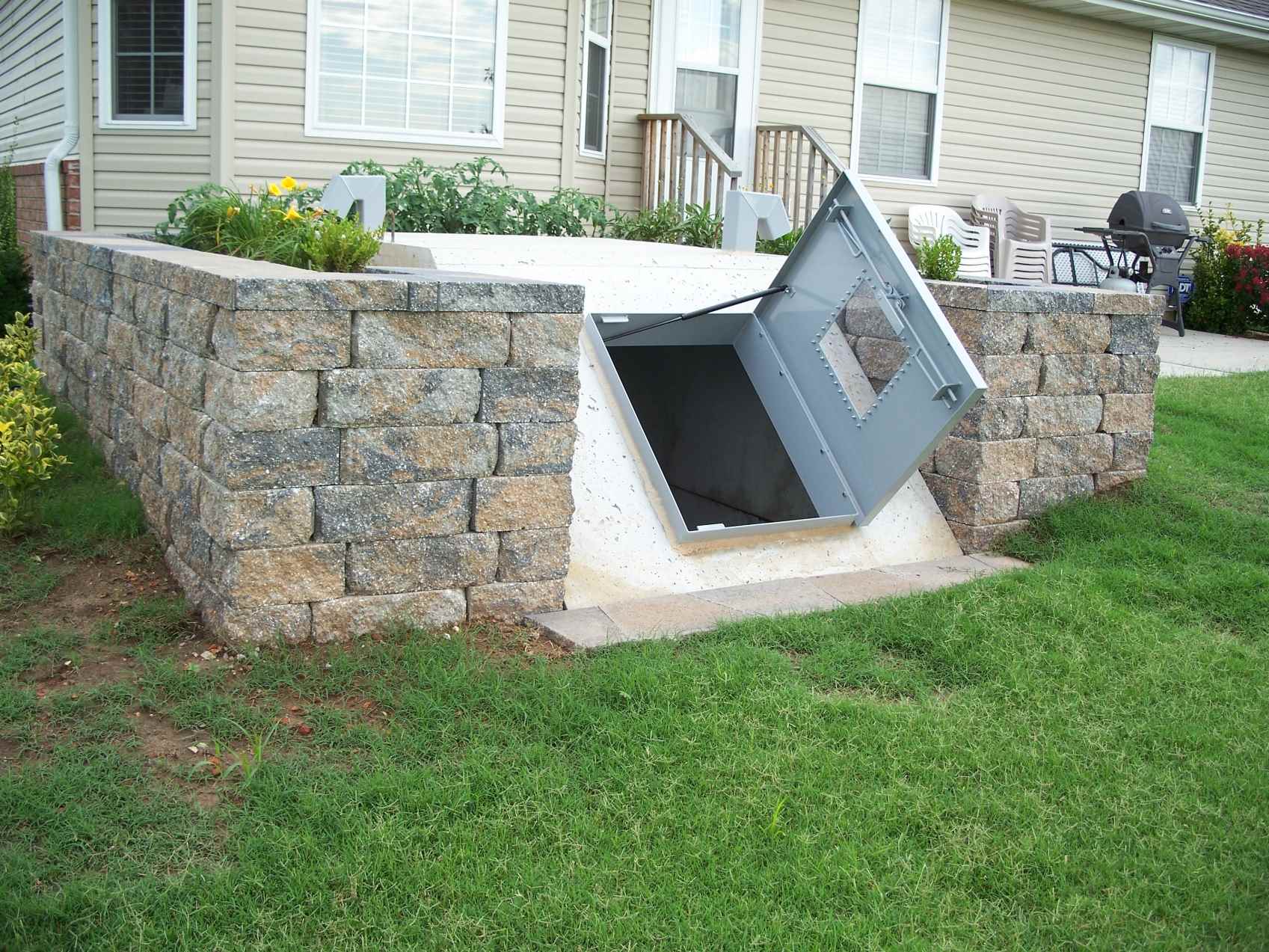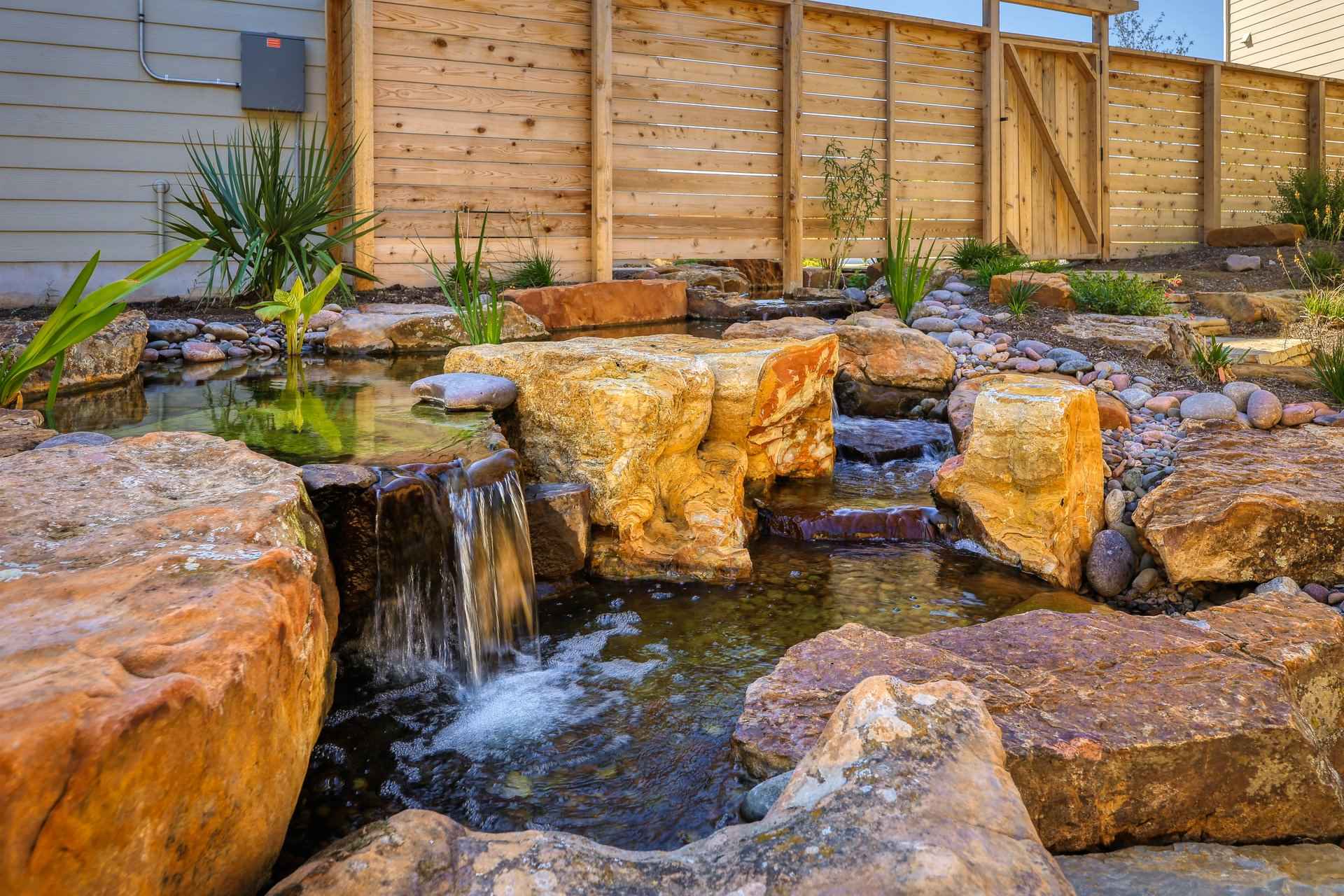Home>Garden Design>How Much Does It Cost To Build A Pickleball Court In Your Backyard
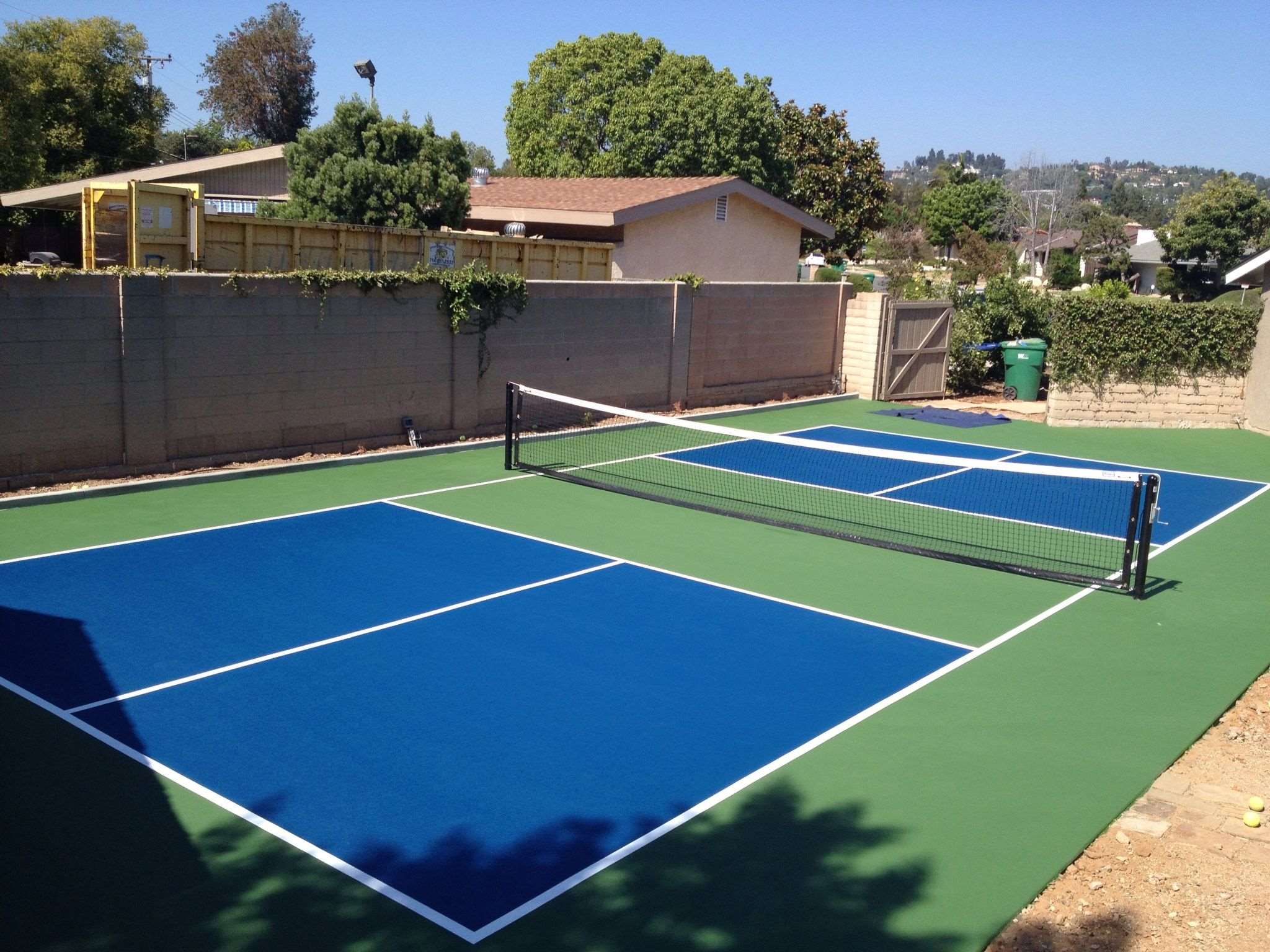

Garden Design
How Much Does It Cost To Build A Pickleball Court In Your Backyard
Published: August 5, 2023
Get an estimate on the cost of building your own backyard pickleball court with landscape design. Create a space for fun and exercise right at your doorstep.
(Many of the links in this article redirect to a specific reviewed product. Your purchase of these products through affiliate links helps to generate commission for Chicagolandgardening.com, at no extra cost. Learn more)
Table of Contents
Introduction
Are you a pickleball enthusiast looking to bring the excitement of the game closer to home? Building a pickleball court in your backyard is a fantastic way to indulge in this fast-growing sport and enjoy endless fun with family and friends. Not only does it provide a convenient and accessible place to play, but it also adds value to your property and creates a beautiful outdoor space for recreational activities.
Before jumping into the project, it’s important to understand the factors that can affect the cost of building a pickleball court. This article will guide you through the various aspects to consider, providing insights into the materials, dimensions, amenities, and maintenance needed to create your dream court.
From the initial planning stage to the finishing touches, constructing a pickleball court requires careful consideration and a well-thought-out budget. The cost can vary based on factors such as the size of the court, choice of materials, surface options, and additional features like fencing, lighting, and accessories.
By exploring these factors in detail, we aim to provide you with a comprehensive understanding of the financial aspects involved in building a backyard pickleball court. Whether you’re a homeowner looking to invest in your own private court or a community organization aiming to provide a recreational space for pickleball enthusiasts, this guide will help you make informed decisions and plan your budget accordingly.
So, if you’re ready to embark on the journey of bringing pickleball closer to home, let’s dive into the factors that influence the cost of building a backyard pickleball court and explore the various options available to create a stunning, functional, and cost-effective playing surface.
Factors Affecting Cost
When determining the cost of building a pickleball court in your backyard, several factors come into play. Understanding these factors will help you estimate your budget accurately and make informed decisions. Here are the key considerations that can influence the overall cost:
- Size of the Court: The dimensions of the court play a significant role in determining the cost. A standard pickleball court measures 20 feet wide by 44 feet long. However, some may prefer to have larger dimensions for a more spacious playing area. Keep in mind that larger court sizes may require more materials, increasing the cost.
- Choice of Materials: The materials used for constructing the court can vary widely in terms of quality and cost. The three primary components to consider are the base, surfacing, and line marking materials.
- The base material provides a stable foundation for the court. Common options include concrete, asphalt, or crushed stone. Concrete tends to be the most durable but can be more expensive.
- For the playing surface, you can choose between asphalt, concrete, or specialized outdoor court tiles. Each option has its pros and cons in terms of durability, maintenance, and cost.
- The line marking materials determine the visibility and longevity of the court lines. Painted lines are the most common and cost-effective option, while pre-fabricated tapes offer convenience but can be more expensive.
- Additional Features: Fencing, lighting, and net systems are essential add-ons to consider when planning a pickleball court. The cost of these features will depend on the quality and specifications required. Chain-link fencing is a popular and cost-effective choice, while LED lighting systems provide optimal visibility but may have a higher upfront cost.
- Accessories and Amenities: Items such as benches, bleachers, wind screens, and scoreboards can enhance the overall experience on the court. These accessories add comfort and convenience but will impact the total cost of the project. Consider your specific needs and budget when selecting the extras.
- Maintenance and Upkeep: While not directly related to the initial cost of construction, it’s important to factor in the long-term maintenance and upkeep expenses. Regular cleaning, resurfacing, and repairs may be required to keep the court in optimal condition, ensuring its longevity and performance.
By carefully considering these factors, you can better evaluate the overall costs of building a pickleball court. It’s recommended to consult with professionals and obtain multiple quotes to ensure you make informed decisions and achieve the desired court while staying within your budget.
Construction Materials
The choice of construction materials for your pickleball court will impact its longevity, performance, and overall cost. It’s essential to select materials that are durable, weather-resistant, and suitable for the intended level of play. Here are the primary materials to consider:
- Base Material: The base material serves as the foundation for your court and provides stability and support. Common options include:
- Concrete: Concrete is a popular choice due to its durability and long lifespan. It offers excellent surface stability and can withstand heavy use. However, it may have a higher initial cost and requires professional installation.
- Asphalt: Asphalt is another commonly used base material. It provides a smooth playing surface and offers good traction. It’s more cost-effective than concrete but may require more frequent maintenance and resurfacing.
- Crushed Stone: Crushed stone is a budget-friendly option that provides good drainage. It’s often used for temporary or recreational courts but is less durable than concrete or asphalt.
- Playing Surface: The playing surface is where the action happens, and it’s important to choose a material that offers good playability and is suitable for the level of play. The most common options include:
- Asphalt: Asphalt offers a consistent playing surface and is relatively low-cost. However, it may require regular maintenance and resurfacing to prolong its lifespan.
- Concrete: Concrete provides a durable and long-lasting surface. It offers good playability and requires minimal maintenance. However, it may have a higher upfront cost.
- Outdoor Court Tiles: Specialized outdoor court tiles are designed specifically for pickleball courts. They offer excellent playability, shock absorption, and good traction. While more expensive than asphalt or concrete, they are easy to install and require minimal maintenance.
- Line Marking Materials: The lines on the court are crucial for gameplay and visibility. There are several options for marking the lines:
- Paint: Painted lines are the most common and cost-effective option. They provide good visibility but may require regular touch-ups and maintenance over time.
- Pre-fabricated Tapes: Pre-fabricated tapes offer convenience and precision in line marking. They are durable and provide excellent visibility. However, they are more expensive than paint and may require professional installation.
When choosing construction materials, it’s essential to consider your budget, desired level of play, and maintenance requirements. Consulting with professionals and considering their recommendations can help you make an informed decision and ensure that your pickleball court meets your expectations in terms of performance, longevity, and cost-efficiency.
Surface Options
The surface of a pickleball court plays a crucial role in determining the quality of gameplay and the overall experience for players. It’s important to choose a surface option that offers good traction, minimizes the risk of injuries, and is suitable for your specific needs. Here are the main surface options to consider:
- Asphalt: Asphalt is a popular choice for pickleball court surfaces. It provides a consistent and durable playing surface with good traction. Asphalt courts are relatively low-cost and can withstand heavy use. However, they may require regular maintenance and resurfacing to maintain their quality over time.
- Concrete: Concrete surfaces offer durability and excellent playing characteristics. They provide a consistent and smooth surface that requires minimal maintenance. Concrete courts are a great option for players who prioritize performance and longevity. However, the upfront cost of concrete surfaces may be higher compared to other options.
- Outdoor Court Tiles: Specialized outdoor court tiles have gained popularity in recent years. These interlocking tiles are made from durable materials such as polypropylene or high-impact plastic. They offer exceptional playability, shock absorption, and good traction. Outdoor court tiles are easy to install, require minimal maintenance, and often come with a long lifespan warranty. While they may have a higher upfront cost, their performance and durability make them a worthwhile investment for serious pickleball players.
When choosing a surface option, it’s important to consider factors such as your budget, level of play, and maintenance requirements. It’s also beneficial to consult with professionals or experienced players to get advice on which surface option best suits your needs. Additionally, visiting local pickleball courts with different surfaces can provide firsthand experience and help you make an informed decision.
Ultimately, the right surface option will enhance your pickleball experience, ensure player safety, and contribute to the overall enjoyment of the game. Whether you opt for the traditional asphalt, the reliable concrete, or the high-performance outdoor court tiles, investing in a quality playing surface will undoubtedly elevate your pickleball game.
Court Dimensions and Markings
The dimensions and markings of a pickleball court are standardized to ensure fair gameplay and consistency. When building a backyard pickleball court, it’s essential to adhere to these specifications to create a regulation-size court and provide an optimal playing experience. Let’s explore the court dimensions and markings:
- Court Size: A standard pickleball court measures 20 feet wide by 44 feet long. These dimensions provide ample playing space and allow for proper shot placement without feeling cramped. However, for those with more space available, larger court sizes can be considered to create a more spacious playing area.
- Court Markings: The court is marked with specific lines that delineate the playing area. Here are the key markings:
- Baseline: The baseline is the boundary line at the back of the court.
- Sidelines: The sidelines define the width of the court and run parallel to the net.
- Non-Volley Zone (NVZ) Line: Also known as the “kitchen,” the NVZ line is located 7 feet from the net. Players are not allowed to step into this area and hit the ball on the volley (without a bounce).
- Centerline: The centerline runs perpendicular to the net and divides the court into two equal halves.
- Service Boxes: Two service boxes are present on each side of the net. The server must stand behind the baseline and serve diagonally to the opposite service box.
- Service Areas: The service areas are marked by the areas between the baseline and the NVZ line on each side of the court. These areas indicate where the proper serving position should be maintained.
- Color and Contrast: The line markings are typically white or a contrasting color to the playing surface for optimal visibility. Having clear, well-defined lines ensures that players can accurately judge the ball’s position during gameplay.
When constructing your pickleball court, it’s crucial to accurately measure and mark these dimensions on the playing surface to maintain the integrity of the game. Use high-quality paint or pre-fabricated tapes for the markings to ensure visibility and longevity.
Remember, proper court dimensions and markings are essential for fair play and a professional playing experience. By adhering to the official regulations, you can create an authentic pickleball environment and enjoy the game to its fullest on your backyard court.
Fencing and Net Systems
Installing fencing and net systems in your pickleball court is important for player safety, boundary definition, and maintaining proper gameplay. These essential features provide a clear separation between the court and its surroundings, while also ensuring that the ball stays within the court during intense rallies. Let’s explore the key considerations for fencing and net systems:
- Fencing: Fencing around your pickleball court serves multiple purposes, including:
- Boundary Definition: Fencing helps clearly define the boundaries of the court, preventing interference from outside elements.
- Safety: It acts as a safety barrier, keeping players on the court and reducing the risk of accidents or injuries.
- Ball Containment: Fencing prevents balls from straying outside the court, minimizing disruptions during gameplay and ensuring a consistent experience.
- Net Systems: The net is a fundamental component of pickleball, dividing the court into two halves. When selecting a net system, consider the following:
- Height: Pickleball nets typically have a height of 36 inches at the center and 34 inches at the sidelines. Ensure that the net meets these specifications for fair play.
- Adjustability: Look for a net system that allows for easy adjustment of net tension to meet official playing standards.
- Stability: A sturdy and durable net system is essential to withstand intense gameplay. Look for systems that offer stability features like weighted bases or ground anchors.
- Easy Setup and Storage: Consider a net system that is quick and easy to set up, dismantle, and store for convenience and portability.
- Fencing Options: Chain-link fencing is a popular and cost-effective choice for pickleball courts. It provides durability, visibility, and containment while keeping the game accessible to spectators. Alternatively, vinyl-coated chain-link fencing offers added aesthetic appeal and corrosion resistance.
- Net Systems: Pickleball nets come in various materials, including nylon or polyester. Look for nets with reinforced edges and sturdy construction to ensure longevity. Portable net systems typically consist of metal frames and durable netting, allowing for easy setup and storage.
When selecting fencing and net systems, it’s important to consider your budget, desired level of play, and any specific requirements or regulations in your local area. Consulting with professionals or experienced pickleball players can provide valuable insights and help you choose the most suitable options for your backyard court.
Remember, investing in quality fencing and net systems not only enhances the safety and functionality of your pickleball court but also contributes to an enjoyable and authentic playing experience for all participants.
Lighting
Proper lighting is crucial for playing pickleball in the evenings or during dark conditions, ensuring visibility and safety on the court. Installing appropriate lighting systems in your backyard pickleball court will allow you to extend playtime and enjoy the game at any hour. Here are some key considerations for pickleball court lighting:
- Illumination Level: The lighting system should provide sufficient illumination to evenly light up the entire court. Aim for an average illumination level of 30 to 50 foot-candles, which is the standard for most recreational pickleball facilities. However, for competitive play or tournament purposes, higher illumination levels may be required.
- Lighting Uniformity: Uniform lighting distribution across the entire court is important to eliminate shadows and ensure consistent visibility for players. Avoid bright spots or dark areas on the court by selecting lighting fixtures with appropriate beam angles and positioning them strategically.
- Lighting Technology: LED (Light-Emitting Diode) lighting is the most commonly used technology for pickleball court lighting due to its energy efficiency, longevity, and superior illumination quality. LED lights are durable, produce minimal heat, and offer instant illumination without flickering, making them ideal for sports applications.
- Placement of Lighting Fixtures: Proper placement of lighting fixtures is crucial to achieve optimal lighting conditions on the court. Typically, lighting poles are positioned around the court perimeter or along the sidelines, with fixtures angled to evenly illuminate the playing surface. Consider factors such as height, angle, and spacing to provide uniform lighting distribution without creating glare or shadows.
- Lighting Controls: Installing lighting controls, such as timers or motion sensors, can help conserve energy by automatically turning lights on or off as needed. This ensures that lights are only in use when the court is being utilized, reducing both energy consumption and operating costs.
When selecting lighting systems for your pickleball court, it’s advisable to consult with lighting professionals who have experience in sports lighting design. They can assist in determining the appropriate number of fixtures, their placement, and provide guidance on meeting local lighting regulations or standards.
Properly illuminated pickleball courts not only enhance visibility, but they also contribute to the overall atmosphere and enjoyment of the game. With well-designed and installed lighting systems, you can extend your playing hours and create a vibrant and inviting space to engage in pickleball activities.
Accessories and Amenities
In addition to the essential components of a pickleball court, incorporating accessories and amenities can enhance the overall experience and make your backyard court even more functional and enjoyable. Here are some accessories and amenities to consider:
- Benches and Seating: Installing benches or seating areas near the court allows players and spectators to rest and observe the game comfortably. It provides a convenient place to take breaks between games and encourages socialization.
- Bleachers: If you have a larger space or expect a larger gathering, bleachers can be a great addition to accommodate more spectators. It creates a designated area for observers to watch the action and cheer on the players.
- Wind Screens: Wind screens or privacy screens can be installed along the perimeter of the court to reduce wind interference during play and provide a sense of privacy. They also enhance the visual appeal of the court and create a professional look.
- Scoreboards: Scoreboards can be mounted near the court to keep track of points and games. This adds a competitive element to the game and makes it easier for players and spectators to follow the progress of matches.
- Storage Solutions: Consider incorporating storage solutions such as cabinets or lockers to store equipment such as pickleball paddles, balls, and nets. This keeps everything organized and readily accessible, ensuring a smooth and efficient playing experience.
- Shade Structures: Adding shade structures like umbrellas or canopies around the court provides relief from direct sunlight, especially during hot summer days. It keeps players and spectators comfortable and protects against harmful UV rays.
When choosing accessories and amenities, consider your budget, available space, and the needs of players and spectators. Assess what will contribute most to the overall functionality and enjoyment of the court. Consult with professionals or experienced pickleball players for suggestions and recommendations on the most useful and suitable additions for your specific circumstances.
Remember, these accessories and amenities not only enhance the comfort and enjoyment of players and spectators but also add a touch of professionalism and style to your backyard pickleball court.
Maintenance and Upkeep
Proper maintenance and upkeep are essential to keep your pickleball court in optimal condition and ensure its longevity. Regular care and attention will help preserve the quality of the playing surface, increase player safety, and minimize the need for costly repairs. Here are some key maintenance tasks to consider:
- Cleaning: Regularly sweep or blow off any debris, such as leaves, dirt, or twigs, from the playing surface. Use a pressure washer or hose with a mild detergent to remove dirt, stains, or any buildup. Keeping the court clean not only improves its appearance but also prevents damage and maintains its playing characteristics.
- Resurfacing: Over time, the playing surface may show signs of wear and tear, including cracks, chips, or fading. Consider resurfacing the court to restore its smoothness and playability. Hire professionals to assess the condition of the surface and perform the necessary repairs or resurfacing techniques, such as patching, crack filling, and applying new layers of coating.
- Line Marking: The lines on the court can fade over time due to weather, usage, and maintenance activities. Regularly inspect and touch up any faded or worn lines to ensure visibility and accurate gameplay. Repaint or reapply pre-fabricated tapes as needed to maintain a crisp and well-defined court layout.
- Nets and Fencing: Inspect the net system and fencing regularly for any damage or wear. Replace worn-out or damaged components to ensure player safety and to maintain the integrity of the court’s boundaries. Regularly tighten or adjust the net to ensure it meets official height requirements.
- Regular Inspections: Conduct routine inspections of the entire court, including the base, surfacing, fencing, net systems, lighting, and other accessories. Look for any signs of wear, damage, or potential hazards. Promptly address any issues identified to prevent further deterioration or safety concerns.
- Seasonal Maintenance: Different seasons may require specific maintenance activities. In colder climates, ensure proper winterization to protect the court from freezing and thawing cycles. In warmer climates, take steps to mitigate the effects of intense heat and sun exposure. Adjust maintenance routines accordingly to suit the climate and preserve the integrity of the court throughout the year.
Regular maintenance and proactive care will significantly extend the lifespan of your pickleball court and ensure the best playing experience possible. Create a maintenance schedule, document your activities, and effectively communicate with professionals to address any specific maintenance needs or concerns.
By investing time and effort into maintaining your pickleball court, you can continue enjoying the sport for years to come, while also preserving its visual appeal and functionality.
Conclusion
Building a pickleball court in your backyard is an exciting project that brings the joy of this fast-growing sport right to your doorstep. However, it’s important to consider various factors that can affect the cost and overall success of your project. From choosing the right construction materials, surface options, and dimensions to incorporating fencing, net systems, lighting, and additional amenities, each decision plays a critical role in creating a functional and enjoyable court.
By carefully assessing your needs, budget, and level of play, you can make informed choices that align with your goals. Consulting with professionals and seeking advice from experienced players will provide valuable insights and help you navigate the process more efficiently.
Maintenance and upkeep should not be overlooked either. Regular cleaning, resurfacing when needed, conducting inspections, and promptly addressing any issues will ensure the longevity and quality of your pickleball court.
Remember, the journey of building a backyard pickleball court is not just about the end result—it’s about the experiences, memories, and fun that you and your family, friends, and fellow players will create together. Your backyard court will become a hub for socializing, exercise, and friendly competition, fostering a sense of community and bringing people closer together.
So, go ahead and embark on this exciting project, bringing the exhilaration of pickleball to your own backyard. Create a space where you can cultivate a love for the game, improve your skills, and forge lasting connections with fellow pickleball enthusiasts. Whether you’re playing for leisure or aiming to host competitive matches, your backyard pickleball court will undoubtedly become a cherished and valuable addition to your property.

